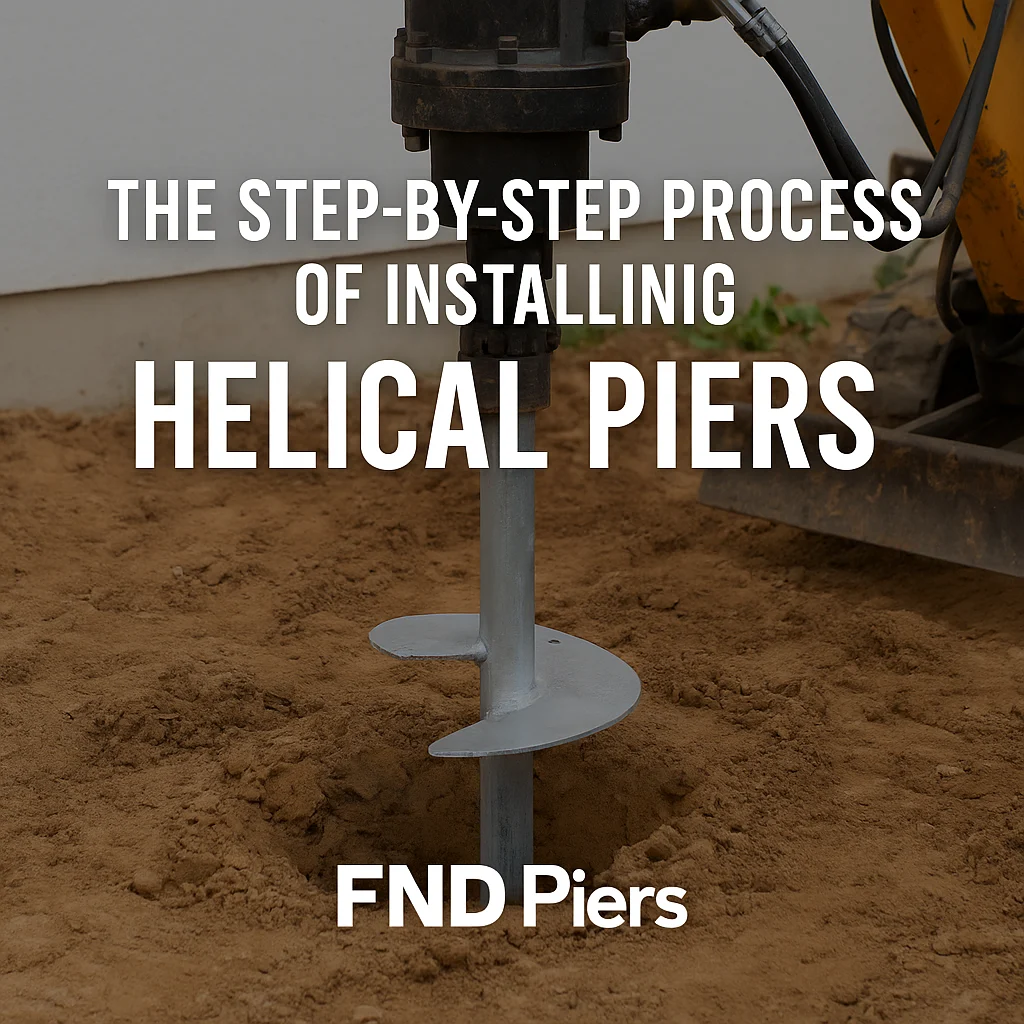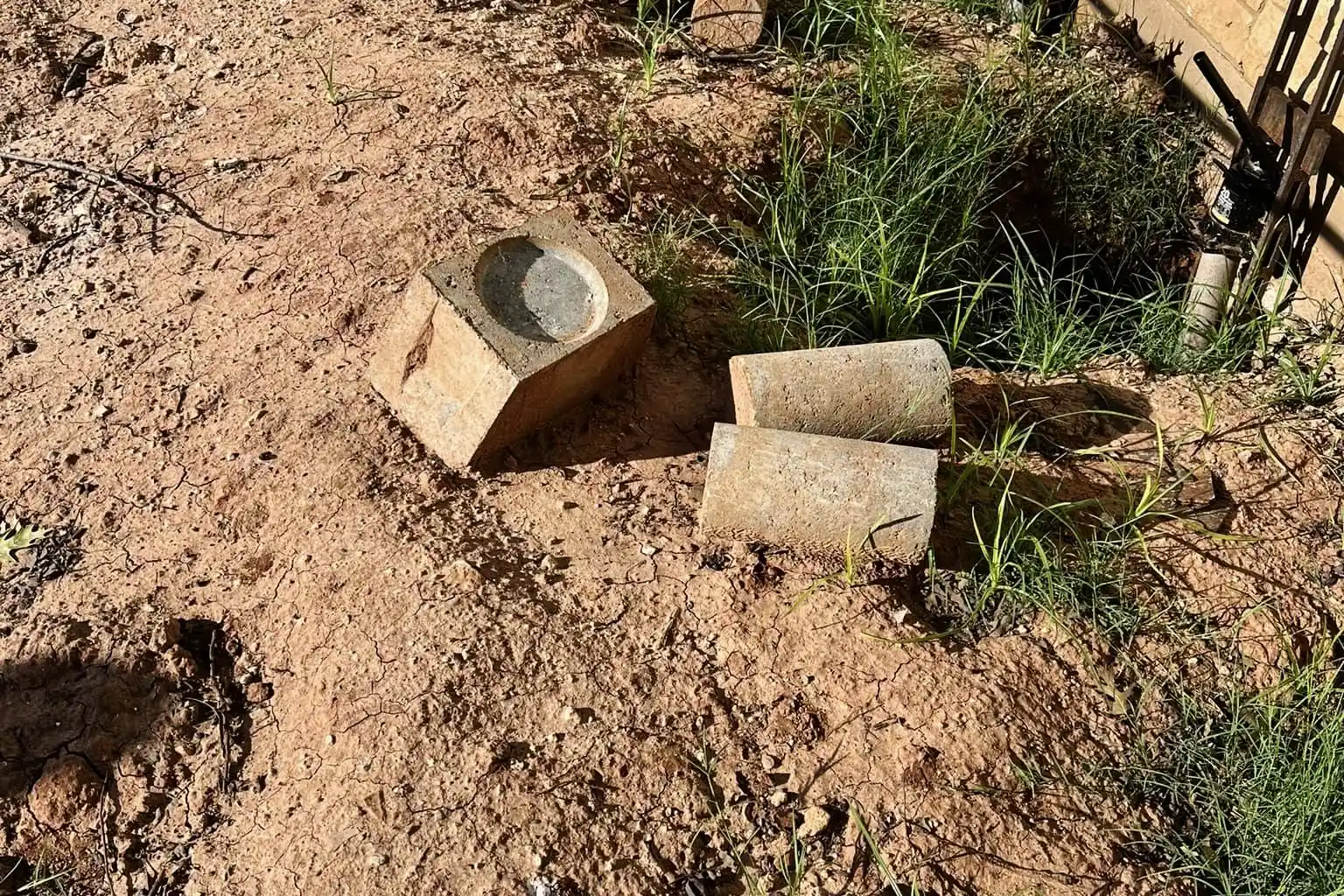
The Step-by-Step Process of Installing Helical Piers
Better, Stronger, and Smarter Foundations with FND Piers When it comes to stabilizing foundations or supporting new construction, helical piers
At FnD Piers, one of the most common questions we hear is: “When should I use a helical pier, and when is a straight shaft pier the better choice?” It’s a fair question, and an important one. If you’re dealing with foundation issues or planning new construction, picking the right pier can make all the difference when it comes to long-term stability and performance.
In this post, we’ll break it down using a straightforward demonstration and plain language, just like we do in our video. Whether you’re a contractor, homeowner, or just curious about how foundations work, we’ll walk you through what makes each type of pier work best in different soil conditions.
To help illustrate the point, we use two pieces of wood. One is a soft treated board—that stands in for soil with little to no integrity. The other is a hardwood—that represents rock or strong load-bearing soil. These aren’t perfect substitutes, of course, but they make the concept easy to see and understand.
We also use two common fasteners to stand in for our pier types:
Let’s start with the soft treated board—the type of material that has no real structure or integrity. If you drive a nail (straight shaft pier) into this soft board, it goes in easily. That part’s fine. But when it comes time to hold any real weight or provide lasting support, there’s not much there. It slides right back out with very little effort. There’s not enough grip or resistance to keep it stable over time.
Now, take that same soft wood, and instead of a nail, use a screw—or in our case, a helical pier. You twist it in, and suddenly it’s a whole different story. It takes effort to get it in, and once it’s there, try pulling it out. You’re going to have a hard time. That screw grabs hold and doesn’t let go. That’s exactly what you want when your soil has no strength. In loose or weak ground, a helical pier provides the bite, grip, and stability you simply can’t get from a straight shaft.
Helical piers are ideal for poor soil conditions—places where there’s little to no structure, strength, or load-bearing capacity. That might include soft clay, loose sand, marshy areas, or ground that’s been disturbed or backfilled.
Because helical piers twist into the ground like a big screw, they don’t rely on the soil holding them in by friction alone. Instead, they generate their own grip as they rotate into place. That makes them the perfect solution when you need to anchor a foundation into material that’s just not strong enough to hold a traditional straight shaft.
In practical terms, we recommend helical piers:
Now let’s take a look at the hardwood—this represents rock or load-bearing soil. If you try screwing a helical pier into rock, well… good luck. It’s not going anywhere. You’ll spin and spin, and the pier won’t dig in like it’s supposed to. You’re essentially trying to screw into concrete, and it just doesn’t work well.
Instead, you grab a nail—your straight shaft pier—and you drive it straight into that hard material. It takes some effort, but once it’s in there, it’s solid. It’s not going to budge without serious force, and that’s the point. You’re not relying on the pier to “grab” the soil, because the soil—or in this case, rock—is doing the work. It’s providing the load-bearing support you need.
Straight shaft piers shine when you’re working in strong, competent ground. When the soil has integrity and can support heavy loads on its own, a straight shaft pier gives you simple, direct support without the need for added complexity.
They’re best used:
The bottom line? Your choice between a helical pier and a straight shaft pier should always come down to soil conditions.
In weak, soft, or unpredictable ground—helical piers are your go-to. They screw into the earth, generate their own stability, and perform well where straight shafts would slip or fail.
In hard, load-bearing soil or rock—straight shaft piers shine. They’re simpler, effective, and provide excellent resistance when the ground itself is already doing the heavy lifting.
As we like to say:
“The wise man built his house on the rock.”
When the ground is solid, a straight shaft pier is a strong and straightforward solution.
But when the ground is soft, shifting, or uncertain, helical is your best bet.
If you’re still not sure what your property needs, give us a call. At FnD Piers, we help you find the right solution for your foundation, based on real-world conditions and honest advice.

Better, Stronger, and Smarter Foundations with FND Piers When it comes to stabilizing foundations or supporting new construction, helical piers

Why You Should Never Use Push Piers in Your Project At FnD Piers, we get a lot of questions about